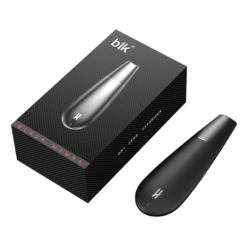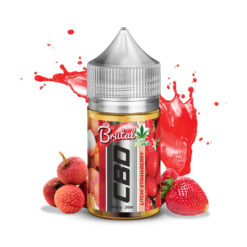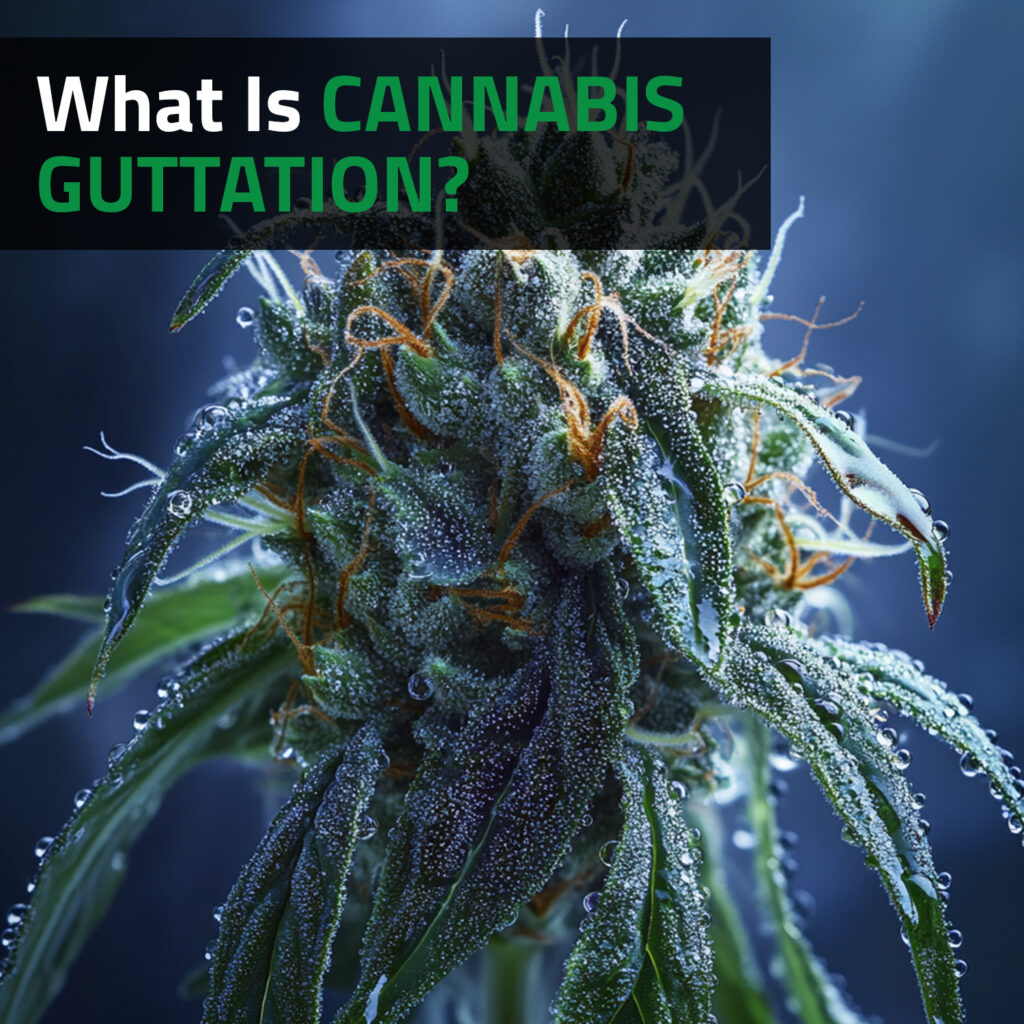Cannabis cultivation comes with its own lexicon of strange-sounding terms and phenomena that can raise questions for growers, especially those new to the process. One such term is “guttation”, a natural occurrence that many growers have witnessed but may not fully understand. When small droplets of liquid appear on the edges or tips of cannabis leaves, it can be easy to mistake them for signs of disease, pest activity, or nutrient problems. However, this is often a result of a process called guttation.
In this article, we will explore what cannabis guttation is, what causes it, how it differs from dew or other types of leaf moisture, its implications for plant health, and what – if anything – growers should do when they observe it. We will also touch on the relationship between guttation and nutrient management, environmental conditions, and overall cannabis plant care.
Understanding Guttation In Plants
Guttation is a natural physiological process observed in many plant species, not just cannabis. It occurs when excess water in the plant’s root system is exuded through special structures called hydathodes, located on the edges or tips of the leaves. These hydathodes are not the same as stomata (tiny pores used for gas exchange and transpiration), but serve a similar excretory function in response to internal pressure within the plant.
Guttation generally happens during the night or early morning hours when humidity is high, temperatures are cooler, and transpiration (the evaporation of water from plant leaves) slows down. Under these conditions, the plant’s roots may still be actively absorbing water from the soil or growing medium, but because transpiration has decreased, internal water pressure builds. The plant relieves this pressure by excreting excess moisture through guttation.
How Guttation Appears In Cannabis
When guttation occurs in cannabis plants, you will typically notice tiny droplets of fluid forming at the tips or margins of the leaves. These droplets may appear clear or slightly cloudy and can dry into small white or yellowish spots if left undisturbed. Some growers report that the dried residue is sticky or crusty to the touch.
Importantly, these droplets are not pure water. They often contain a mixture of xylem sap, which includes minerals, nutrients, sugars, and various organic compounds absorbed from the growing medium. This composition makes guttation distinct from dew or condensation, which is composed purely of water from the air.
Guttation Vs. Dew Vs. Sap: What Is The Difference?
For clarity, it is worth differentiating guttation from two other commonly mistaken plant moisture sources: dew and sap leakage.
Dew forms externally when humid air condenses on the surface of leaves and other plant parts, usually in the early morning. It is atmospheric moisture, not a plant excretion. Sap leakage (or resin excretion) typically occurs when a plant is physically damaged or stressed. Sap is richer in sugars and resinous compounds than guttation fluid and often leaks from stems rather than leaves.
In contrast, guttation is internally generated, results from root pressure, and appears on leaf edges without any physical injury to the plant.
Is Cannabis Guttation Harmful?
Generally, guttation is not harmful to cannabis plants. It is a natural response to internal hydraulic pressure and is typically not a sign of disease or dysfunction. However, while guttation itself is not inherently dangerous, it can sometimes signal underlying issues in the growing environment or nutrient regimen.
Potential Concerns Associated With Guttation
- Overwatering: Guttation can be more pronounced when plants are overwatered or growing in very moist conditions. If the root zone remains saturated, water uptake continues even when it is not needed, increasing pressure in the xylem and resulting in guttation.
- Nutrient burn risk: Since the fluid expelled during guttation contains dissolved nutrients and minerals, excessive guttation may be a sign of nutrient overfeeding. This is especially true in hydroponic systems or when using highly concentrated nutrient solutions. The excreted fluid, if it evaporates and dries on the leaf surface, can leave behind salt residues that may damage leaf tissues or cause “tip burn.”
- Pathogen attraction: The sugars and organic compounds in guttation droplets can attract pests, such as fungus gnats, or provide a growth medium for pathogenic fungi and bacteria if not removed. A humid environment, especially one with poor air circulation, can increase this risk.
What Causes Guttation In Cannabis?
Several environmental and cultural factors contribute to guttation in cannabis. Understanding these can help growers manage and even minimise its occurrence when necessary.
Humidity And Temperature
Guttation is most common when nighttime temperatures drop and relative humidity rises, causing transpiration to slow or stop. Because transpiration is the main way plants shed excess water during the day, any interruption forces the plant to use guttation instead.
Watering Practices
If you’re watering cannabis plants late in the day or excessively, you increase the likelihood of guttation occurring overnight. Ideally, cannabis should be watered earlier in the day to allow time for evaporation and transpiration to balance water levels.
Nutrient Concentration
Over-fertilisation is a common contributor to guttation in cannabis. High nutrient concentrations increase the osmotic uptake of water, intensifying xylem pressure and resulting in more frequent guttation events. Using a proper feeding schedule and periodically flushing the medium can help prevent buildup.
Plant Genetics
Some strains or phenotypes are more prone to guttation than others, particularly those with broad leaves or more active root systems. It is not uncommon for fast-growing hybrids or nutrient-hungry cultivars to exhibit guttation under optimal growth conditions.
How To Manage Or Prevent Excessive Guttation
If you want to reduce or manage guttation in your cannabis plants, here are a few practical tips:
- Adjust watering schedule: Water earlier in the day to ensure the plant can transpire properly before temperatures and humidity shift in the evening.
- Optimise nutrient regimen: Avoid over-fertilising. Use a calibrated EC meter to monitor nutrient concentrations and flush periodically to prevent salt buildup.
- Improve air circulation: Good airflow around your plants helps maintain a stable environment and reduces the chance of humidity-induced guttation and associated fungal issues.
- Maintain balanced RH levels: Keep nighttime relative humidity below 60% if possible. Use dehumidifiers or increase ventilation to help balance moisture levels.
- Inspect for pests and mold: Remove guttation droplets if necessary to discourage microbial growth and pest attraction. Use a clean paper towel or cloth and avoid spreading the moisture to other areas.
Cannabis guttation is a fascinating but often misunderstood physiological process. While it may raise concern among novice growers, it is usually a harmless response to environmental and internal plant conditions. Understanding the difference between guttation and other forms of leaf moisture can prevent unnecessary intervention and help you tune into your plant’s natural rhythms.
Ultimately, cannabis guttation serves as a subtle indicator of how your plant is interacting with its environment. It reflects hydration levels, root activity, and nutrient uptake – offering observant growers another window into the complex, dynamic world of cannabis cultivation.
Whether you see those droplets as a warning sign or a badge of plant vitality, what matters most is maintaining a balanced growing environment, providing appropriate nutrition, and staying attuned to the changing needs of your crop.
Recommended products
-
Taste of Cannabis CBD Cookies – 10mg (150g)
R180.00 -
BLK Black Mamba Dry Herb Vaporizer
R850.00 -
Brutal CBD – Litchi Strawberry
R195.00 – R380.00Price range: R195.00 through R380.00 -
PUFFCO Peak Pro Vaporizer
R7,500.00










